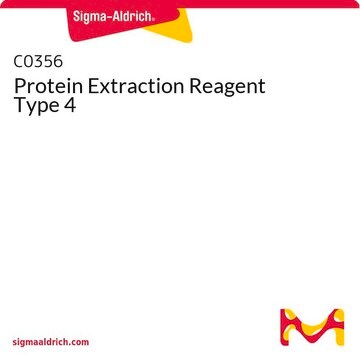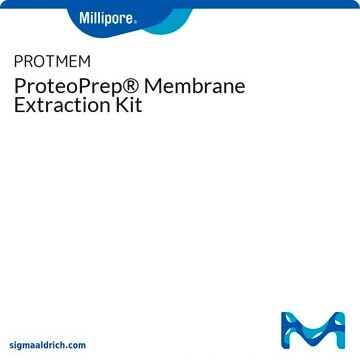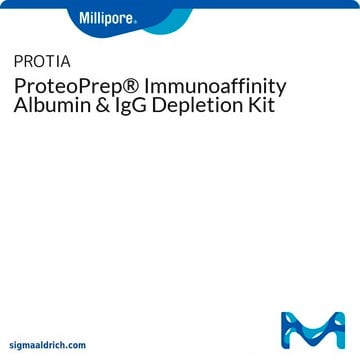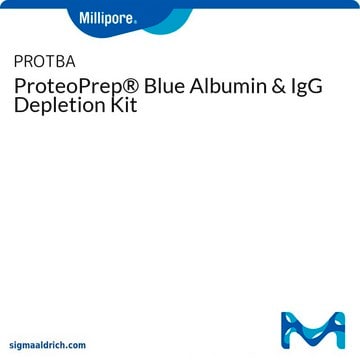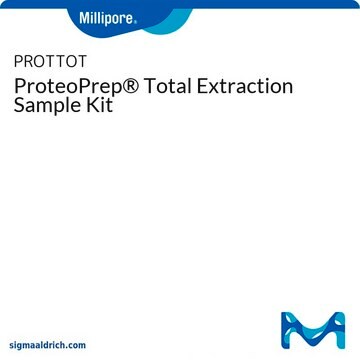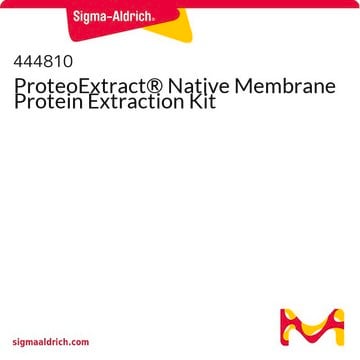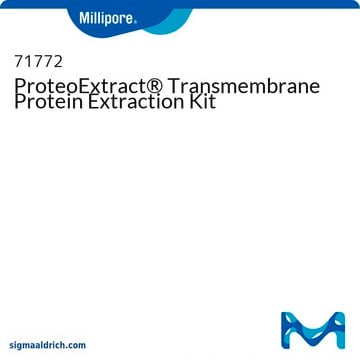PROTTWO
ProteoPrep® Universal Extraction Kit
About This Item
Produtos recomendados
forma
dry powder
temperatura de armazenamento
2-8°C
Aplicação
- Fraction 1: Soluble/Cytoplasmic Proteins
- Fraction 2: Membrane Proteins
Características e benefícios
- Innovative detergent preparations - Highly improved solubility allows for higher protein loads and greater visibility of low abundance proteins on 2D gels.
- Two pre-mixed solubilizaton solutions - Generates two distinct populations for easy 2D analysis.
- Pre-measured reducing and alkylating reagents - Easy-to-use reagents provide improved IEF resolution.
- Pre-weighed dry blends - Stable and easy to reconstitute
- Conveniently Packaged - No waste. Use only the amount needed.
Informações legais
Palavra indicadora
Danger
Frases de perigo
Declarações de precaução
Classificações de perigo
Acute Tox. 3 Oral - Aquatic Chronic 2 - Carc. 2 - Eye Dam. 1 - Repr. 1B - Resp. Sens. 1 - Skin Corr. 1A - Skin Sens. 1 - STOT SE 3
Órgãos-alvo
Respiratory system
Código de classe de armazenamento
6.1C - Combustible acute toxic Cat.3 / toxic compounds or compounds which causing chronic effects
Ponto de fulgor (°F)
Not applicable
Ponto de fulgor (°C)
Not applicable
Certificados de análise (COA)
Busque Certificados de análise (COA) digitando o Número do Lote do produto. Os números de lote e remessa podem ser encontrados no rótulo de um produto após a palavra “Lot” ou “Batch”.
Já possui este produto?
Encontre a documentação dos produtos que você adquiriu recentemente na biblioteca de documentos.
Os clientes também visualizaram
Nossa equipe de cientistas tem experiência em todas as áreas de pesquisa, incluindo Life Sciences, ciência de materiais, síntese química, cromatografia, química analítica e muitas outras.
Entre em contato com a assistência técnica